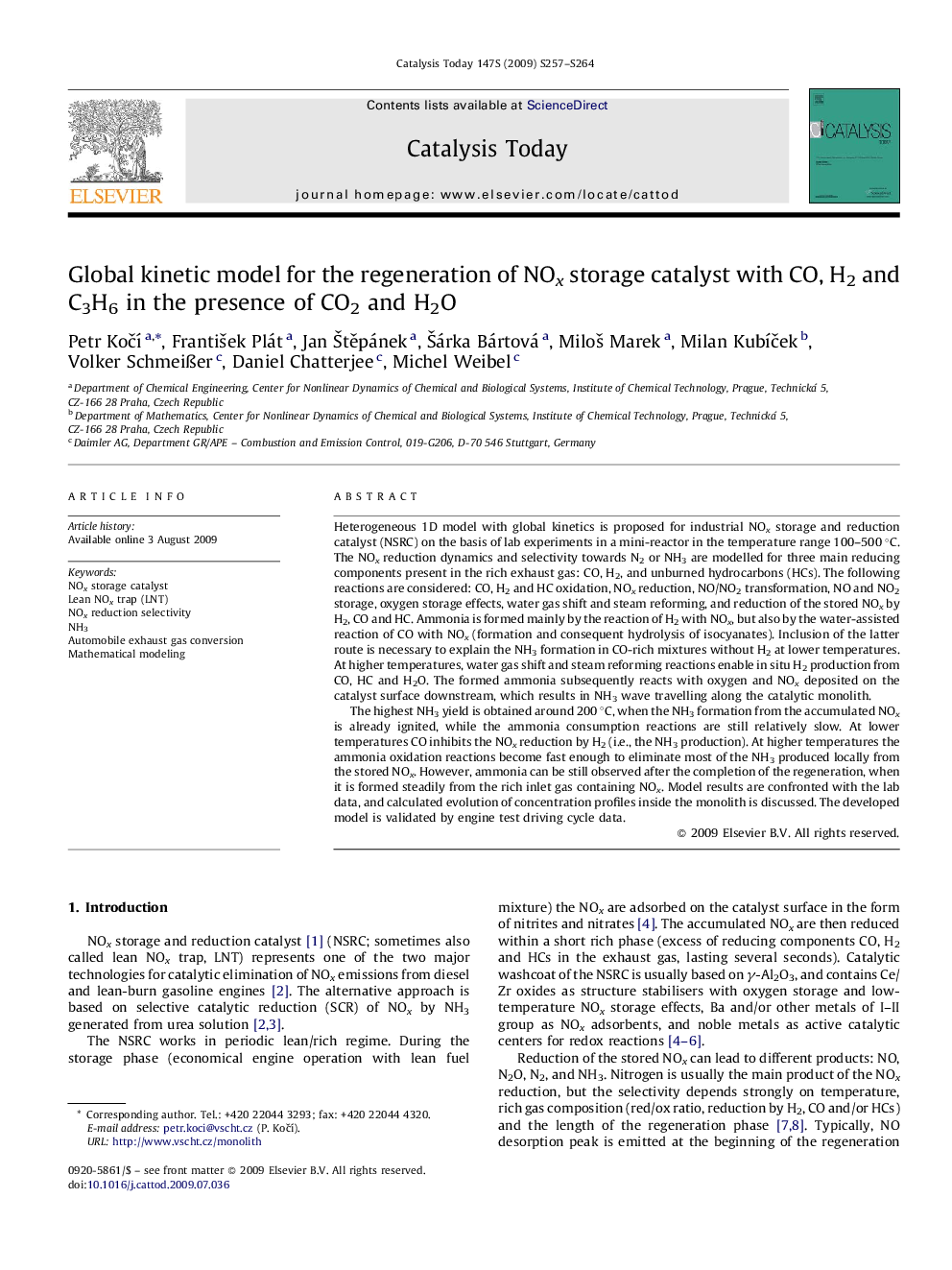| Article ID | Journal | Published Year | Pages | File Type |
|---|---|---|---|---|
| 57103 | Catalysis Today | 2009 | 8 Pages |
Heterogeneous 1D model with global kinetics is proposed for industrial NOx storage and reduction catalyst (NSRC) on the basis of lab experiments in a mini-reactor in the temperature range 100–500 °°C. The NOx reduction dynamics and selectivity towards N2 or NH3 are modelled for three main reducing components present in the rich exhaust gas: CO, H2, and unburned hydrocarbons (HCs). The following reactions are considered: CO, H2 and HC oxidation, NOx reduction, NO/NO2 transformation, NO and NO2 storage, oxygen storage effects, water gas shift and steam reforming, and reduction of the stored NOx by H2, CO and HC. Ammonia is formed mainly by the reaction of H2 with NOx, but also by the water-assisted reaction of CO with NOx (formation and consequent hydrolysis of isocyanates). Inclusion of the latter route is necessary to explain the NH3 formation in CO-rich mixtures without H2 at lower temperatures. At higher temperatures, water gas shift and steam reforming reactions enable in situ H2 production from CO, HC and H2O. The formed ammonia subsequently reacts with oxygen and NOx deposited on the catalyst surface downstream, which results in NH3 wave travelling along the catalytic monolith.The highest NH3 yield is obtained around 200 °°C, when the NH3 formation from the accumulated NOx is already ignited, while the ammonia consumption reactions are still relatively slow. At lower temperatures CO inhibits the NOx reduction by H2 (i.e., the NH3 production). At higher temperatures the ammonia oxidation reactions become fast enough to eliminate most of the NH3 produced locally from the stored NOx. However, ammonia can be still observed after the completion of the regeneration, when it is formed steadily from the rich inlet gas containing NOx. Model results are confronted with the lab data, and calculated evolution of concentration profiles inside the monolith is discussed. The developed model is validated by engine test driving cycle data.
